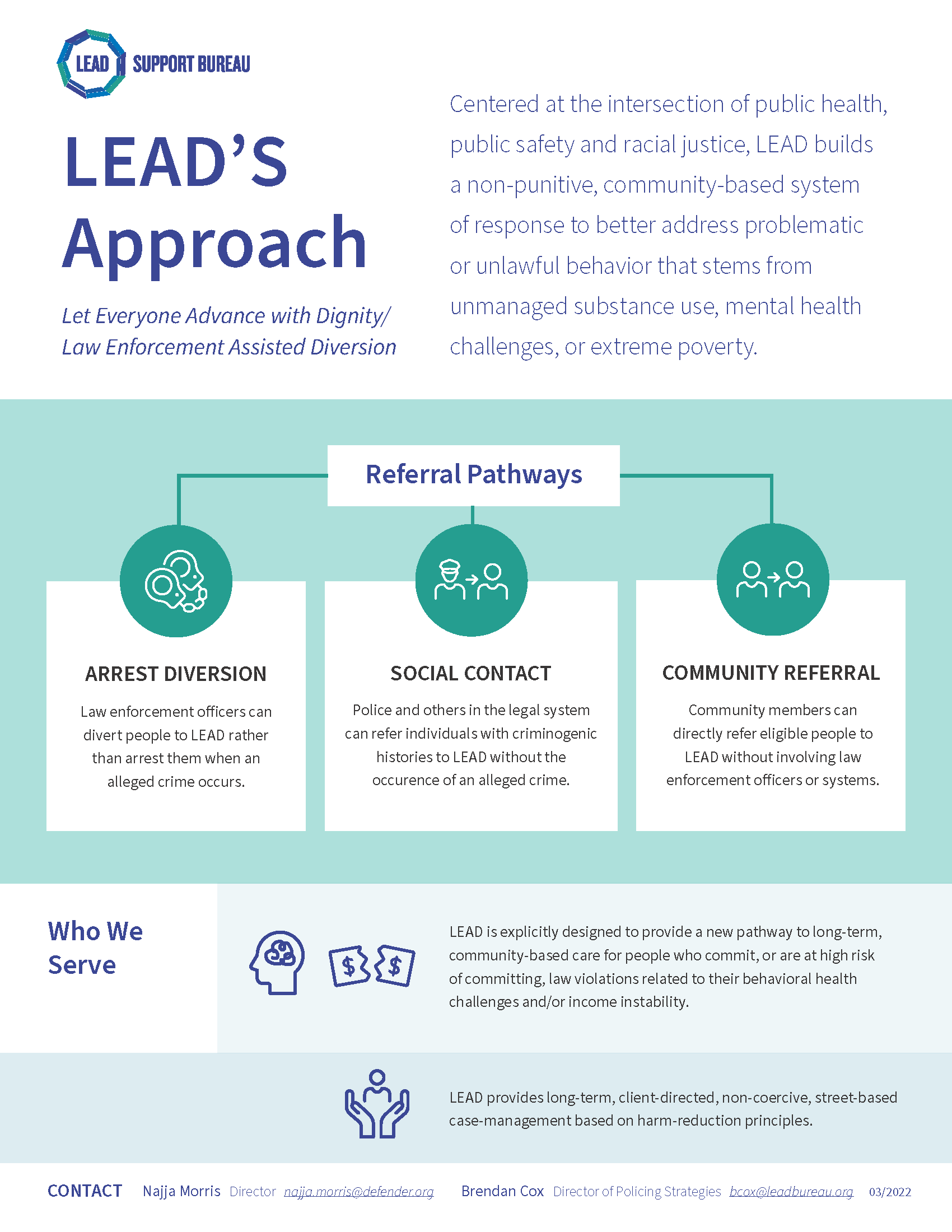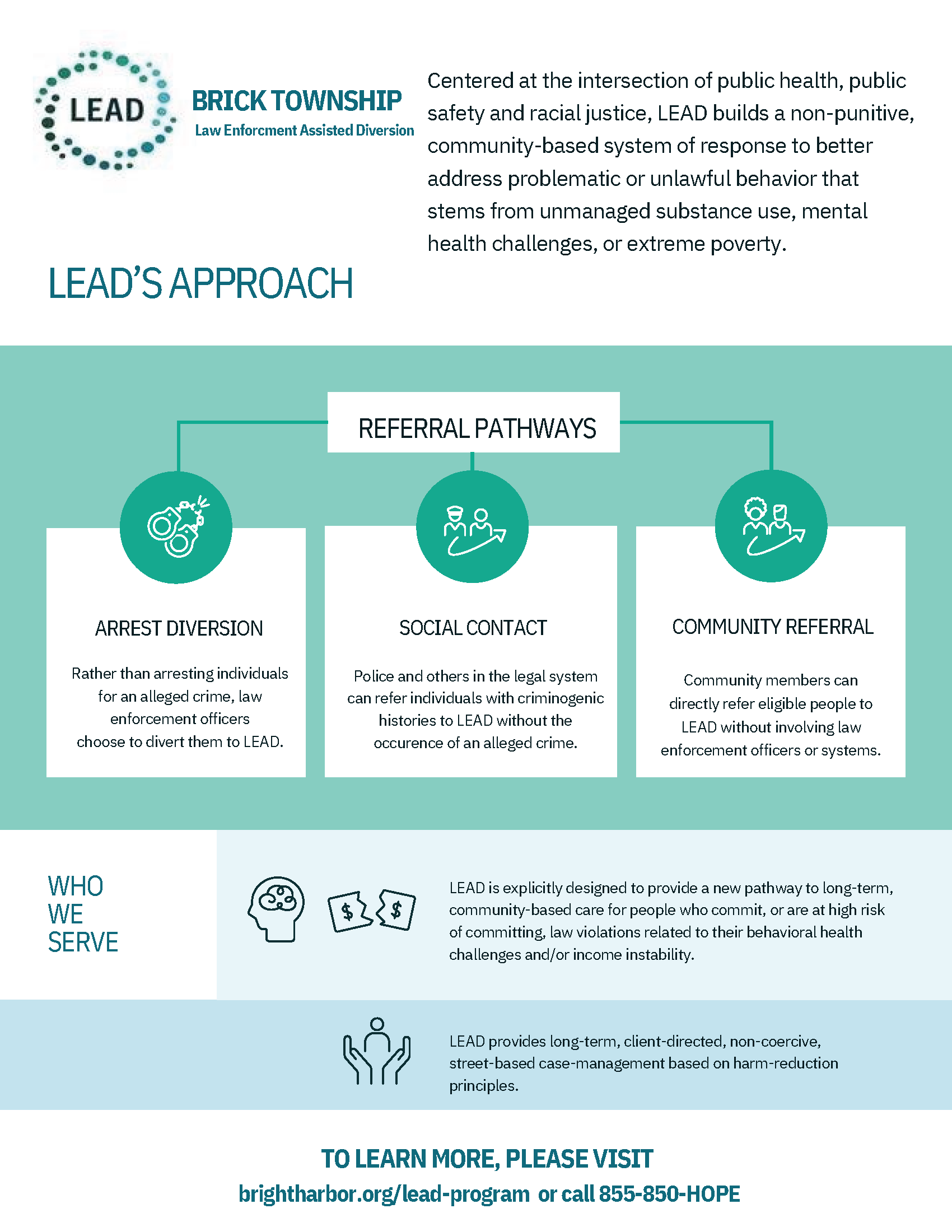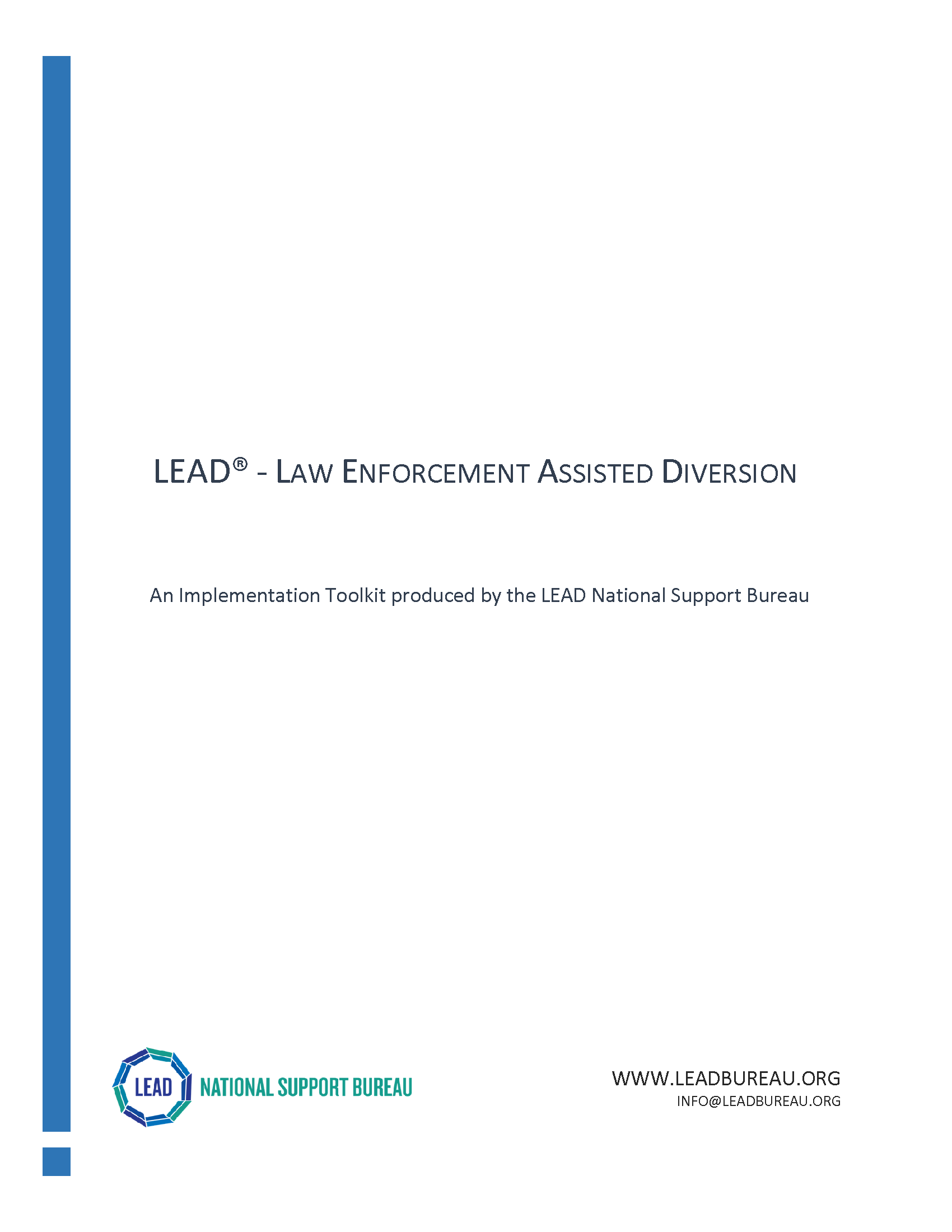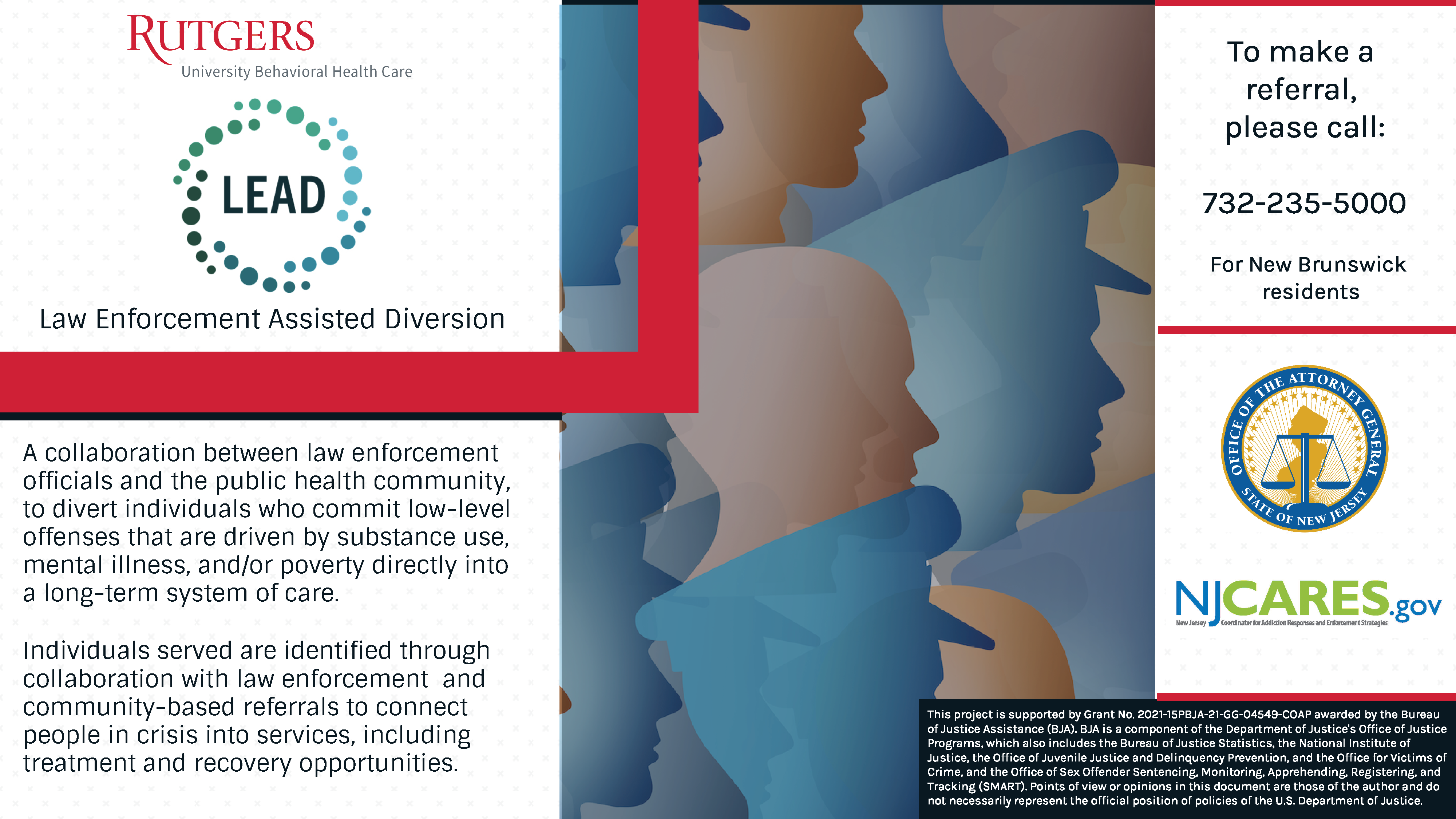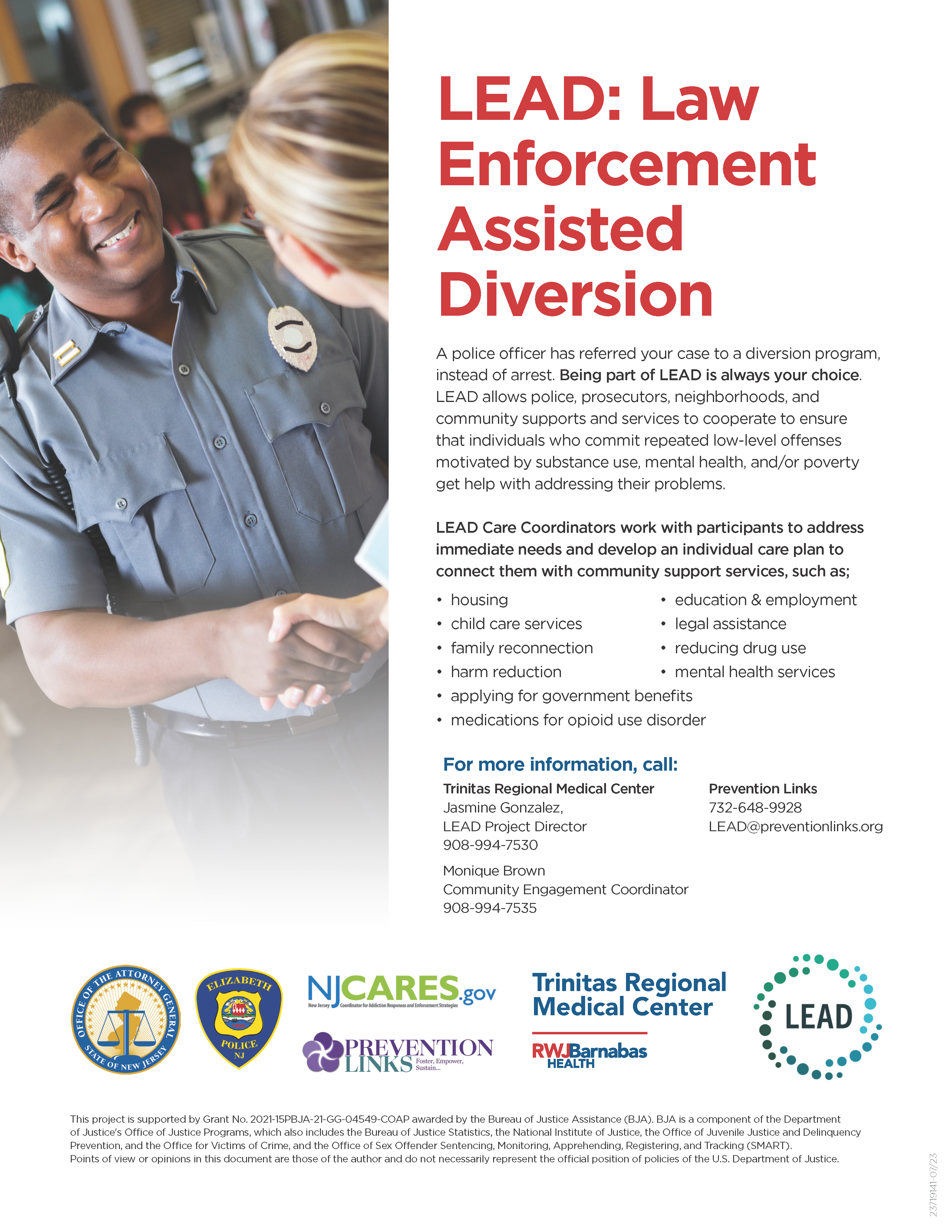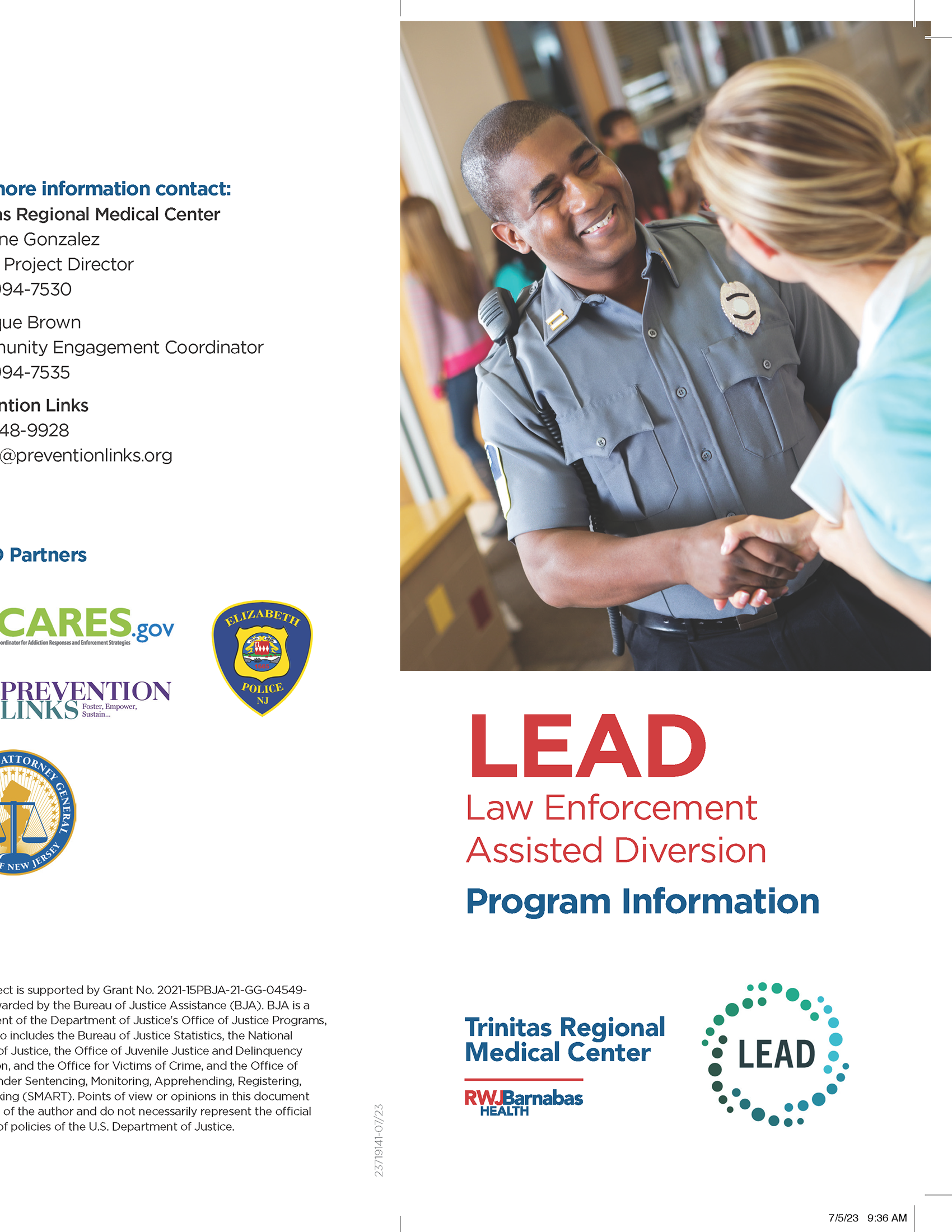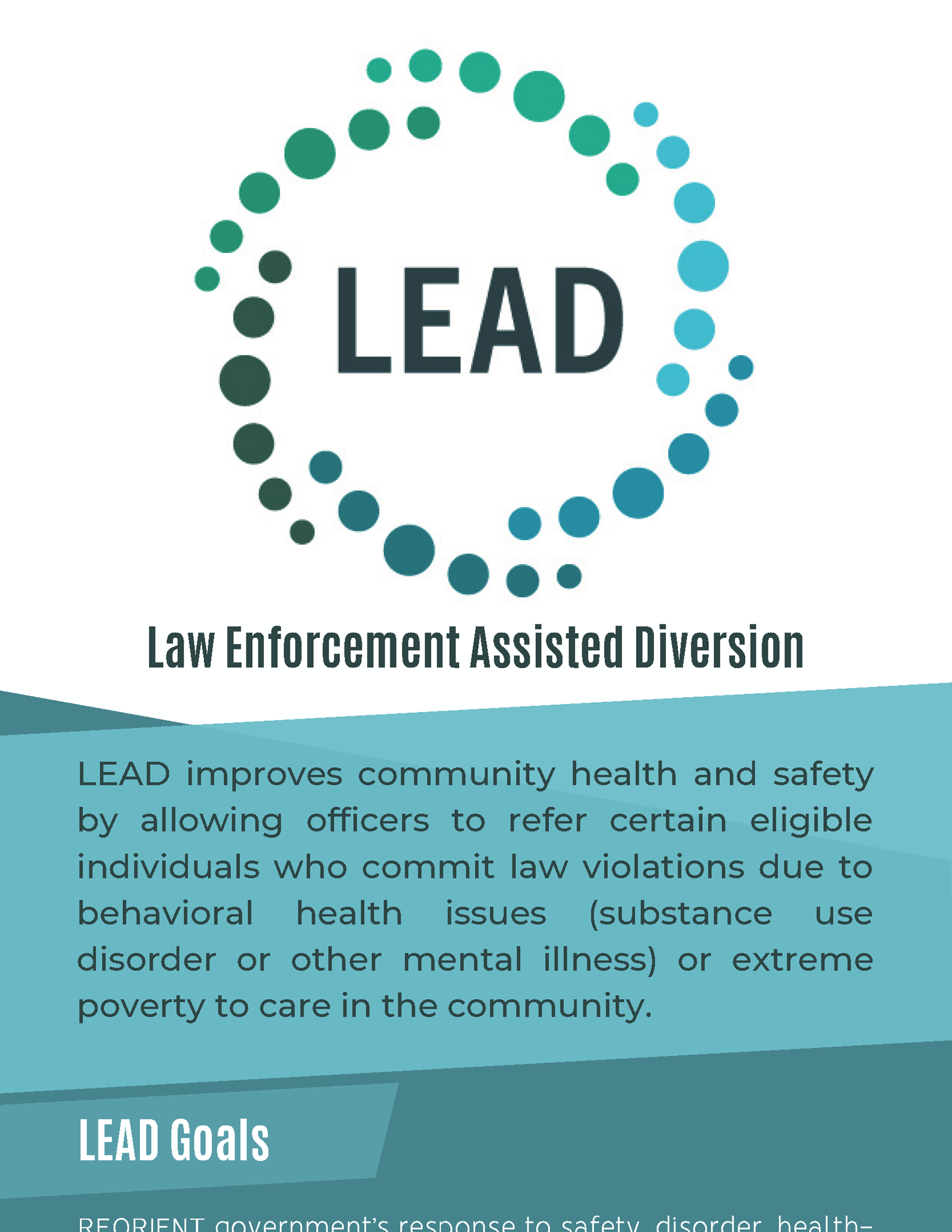Kelly E. Levy
Acting Director
Law Enforcement Assisted Diversion
It is often said that no state can arrest its way out of a public health crisis, i.e., the opioid epidemic. Accordingly, there is a recognized need for strong collaboration between law enforcement officials and the public health community, among others, as a means to connect people in crisis with life-saving treatment and recovery opportunities. This includes exploring approaches that involve law enforcement responding to low-level crimes stemming, in part, from substance use disorder by connecting individuals to care and treatment, without arresting them and following their journey to recovery. One such model for this approach is the Law Enforcement Assisted Diversion (LEAD) program.
The LEAD program, which started over a decade ago and has seen promising results across the country, builds an “offramp” from the criminal justice system into long-term, community-based, harm reduction case management for individuals with repeated contact with law enforcement whose low-level criminal conduct is driven by unmet behavioral needs. LEAD gives law enforcement officers discretion to divert individuals who commit low-level offenses that are driven by substance use, mental illness, and/or poverty directly to services. In a LEAD warm handoff to community-based case management, rather than making an arrest, a police officer calls the LEAD case management, which comes to the scene or the police station to meet the individual, explain LEAD, and invite the person to opt into LEAD. Once the person has accepted the referral, the officer is free to return to duties on the street, but is invited to the ongoing working group to follow the progress of individuals that are diverted from an arrest, through an ongoing law enforcement collaboration. Engagement is dependent on the individual participant’s needs and access to resources.
LEAD does not involve law enforcement arresting individuals, even though LEAD referrals occur primarily after a law enforcement officer has encountered an individual committing a crime. Moreover, it focuses on repeat offenders, relies on a specialized governing body and staffing, and requires specialized training for its officers and stakeholders. The LEAD model integrates the diversion model into police departments’ regular operations by encouraging officers to consider diverting individuals whose conduct is motivated by unmet behavioral needs, including but not limited to substance use disorder, in the normal course of their law enforcement duties. Individuals can also be referred to LEAD through community-based referrals and referrals from law enforcement interactions that do not involve unlawful conduct.
In early 2022, the Department of Law and Public Safety was awarded funding from the Bureau of Justice Assistance under the FFY2021 Comprehensive Opioid, Stimulant, and Substance Abuse Program (COSSAP) Category 2 Grant Program to develop and implement LEAD in six sites in New Jersey. In consultation with the LEAD National Support Bureau and a multidisciplinary working group made up of various representatives of State agencies and recovery, prevention, and harm reduction advocates, a data-driven approach was used to identify program sites within the State that have been disproportionately impacted by the abuse of illicit opioids, stimulants, or other substances as supported, in part, by objective data such as: high rates of treatment admissions for heroin, opioids, and stimulants and high rates of overdose deaths and naloxone administrations by law enforcement and Emergency Medical Services, as well as high poverty rates. The following munciipalities were selected:
- Phillipsburg, NJ (Warren County)
- Irvington, NJ (Essex County)
- Elizabeth, NJ (Union County)
- New Brunswick, NJ (Middlesex County)
- Brick, NJ (Ocean County)
- Bridgeton, NJ (Cumberland County)
The majority of that funding has been offered to public health entities who expressed interest and capability in developing and implementing LEAD in the six selected municipalities.


